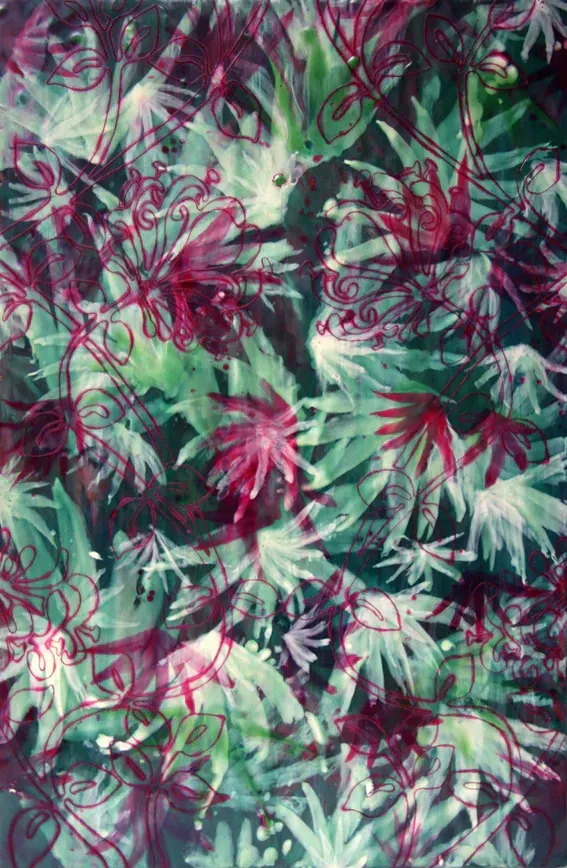Sratching The Surface -New works Amy Melchior

Amy Melchior
Artists Statement
Scratching The Surface
My most recent body of work explores the tensions between the patterned surfaces used in the ‘fin de siecle’ – Victorian era and what lay beneath these surfaces…
The process begins by heating and filtering raw beeswax (fresh from my uncles honey hives) through muslin, before adding damar resin, (a pine resin used for hardening the wax) it is then heated until it is integrated into the wax. Pure powdered pigments are added to create any colour or saturation I desire. I begin application with a brush then fuse each successive layer with a heat gun.
In the moment when the surface is made liquid I bring images through from layers beneath, making them float towards me. The translucency of the wax surfaces gives the illusion of depth and in doing so they become like ethereal spaces.
I etch fine detail into the surface this allows me to draw out aspects of the image, or in these works reinterpret the image.
In this body of work I have been exploring the ability of the etched patterns to partially veil the forms beneath, creating a duality, that of the surface and of a deeper layer of meaning floating within the works.
I began researching the use of pattern used in wallpapers during the late Romantic period in Europe.
The influence of William Morris, on surface and repetitive yet organic patterning ushered in an exciting new era that gradually saw his designs and those of his followers covering on the walls of thousands of homes across the world.
The variety of colours had rapidly increased with experimentation of a new industrial chemistry. Notably with a verdant emerald green, composed of copper acetoarsenite. Which was later found to be highly toxic. Unfortunately it became the colour that epitomized a fresh new design ideal.
I became fascinated by the beauty and tragedy that these walls represented and the tremendous change that occurred at the end of the Victorian era. I sort to give the viewer a sense of this time of great transition, in the decadence of the advancing textile industry, elegant tapestries, stylish wallpapers and delicate laces.
In reframing the past while paying homage to the vision of Morris and his design movement.
“ If you want a golden rule that will fit everything, this is it: Have nothing in your houses that you do not know to be useful or believe to be beautiful.”
